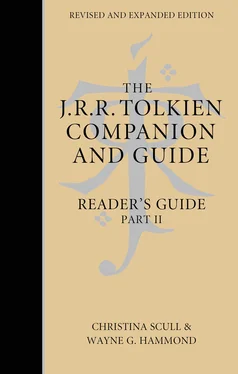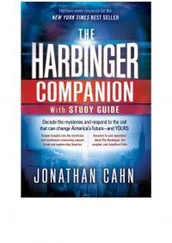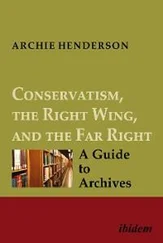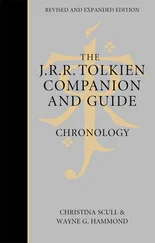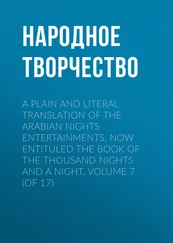The sketches refer only briefly to the cataclysm that destroyed Númenor and its aftermath. In various texts of The Drowning of Anadûnê men do not know exactly what happened, for there were no surviving human witnesses of anything but the destruction of Númenor itself. In the first version, ‘those that are wisest in discernment aver’ that when the Númenórean fleets sail into the West the Avalāi (= Valar) ‘laid down their governance of Earth. And Eru overthrew its shape, and a great chasm was opened in the sea’ into which the fleets fall, and Avallondē and Númenor are destroyed, ‘and the Avalāi thereafter had no local habitation on earth …’ ( Sauron Defeated , p. 351). The second version says that men later heard from the Nimri (= Elves) that Eru ‘changed the fashion of the world; and a great chasm opened in the sea between Anadûnê and the Deathless Land [= Aman, the home of the Valar] … and the world was shaken’. The Númenórean fleet fell into the abyss, and Aman and Númenor which stood on either side of it were destroyed (pp. 372–3).
In neither version is there any suggestion that the world was ever anything but round, nor is there any mention of a Straight Road. But in both the Númenóreans think that some blessed with a special sight might be able to see, in some fashion, the lands that once had been, and they comment that all the ways are crooked that once were straight (pp. 352, 374). In the third version, Tolkien made an addition to explain this:
For in the youth of the world it was a hard saying to men that the Earth was not plain [flat] as it seemed to be, and few even of the Faithful of Anadûnê had believed in their hearts this teaching; and when in after days, what by star-craft, what by the voyages of ships that sought out all the ways and waters of the Earth, the Kings of Men knew that the world was indeed round, then the belief arose among them that it had so been made only in the time of the great Downfall, and was not thus before. Therefore they thought that, while the new world fell away, the old road and the path of the memory of the Earth went on towards heaven …. [p. 392]
There were rumours of mariners who found this road and reached the Land of Aman. Christopher Tolkien points out that whereas ‘the author of The Fall of Númenor knows that “of old many of the exiles of Númenor could still see, some clearly, and some more faintly, the paths to the True West”, but for the rationalising author (as he may seem to be) of The Drowning of Anadûnê the Straight Road was a belief born of desire and regret’ (p. 395).
In emendations made at this time to the latest version of The Fall of Númenor (a fine manuscript written in the early 1940s), and in the sketches and especially successive versions of The Drowning of Anadûnê , Tolkien added a great deal of information about Númenor and its history, much of which survived into the Akallabêth and The Lord of the Rings and was evidently not intended to represent distorted later tradition. Among its more significant features is a strengthening of the ban against the Númenóreans sailing west: they are now forbidden to sail out of sight of the west coast of Númenor. In early years they offer first-fruits to Ilúvatar on the mountain in the centre of Númenor, the Pillar of Heaven; and they visit Middle-earth, where they teach the men they find there language, agriculture, and crafts, and to reject the rule of the followers of Morgoth.
But even before they are corrupted by Sauron, the Númenóreans begin to resent their mortality and murmur against the Valar. Ar-Pharazôn, the last king, no longer invites Sauron to Númenor but takes a great army to Middle-earth and demands that Sauron pay him homage. Sauron feigns submission, and is taken back to Númenor as a hostage, where he soon gains ascendancy over the king. Most Númenóreans cease to honour Ilúvatar, and instead human sacrifices, often of those who were faithful to the old ways, are offered to Morgoth in the temple built by Sauron. Those who sail east to Middle-earth now do so as cruel conquerors and enslavers. Among the Faithful are Amardil, his son Elendil, and Elendil’s sons Anárion and Isildur, who are descended from Earendil through a junior line. In despair at the king’s plans to invade Valinor, Amardil decides to follow the example of Earendil and sail into the West to seek aid of the Valar. He is never seen again. The eruption of the Pillar of Heaven, which is volcanic, contributes to the destruction of Númenor, which slides into the sea and is overwhelmed by gigantic waves. The ships of Elendil are driven east by the winds and carried on great waves to Middle-earth.
Tolkien evidently had clear pictures in his mind of events in the latter part of The Drowning of Anadûnê , which he transformed into passages of brilliant and memorable descriptive writing:
And now the fleets of the Adûnâi [Númenóreans] darkened the sea upon the west of the land, and they were like an archipelago of a thousand isles; their masts were as a forest upon the mountains, and their sails were like a brooding cloud; and their banners were black and golden like stars upon the fields of night. And all things now waited upon the word of Ar-Pharazôn; and Zigûr withdrew into the inmost circle of the Temple, and men brought him victims to be burned. Then the Eagles of the Lords of the West came up out of the dayfall, and they were arrayed as for battle, advancing in a line the end of which could not be seen. [etc.; p. 371, as emended from p. 391]
In the first version, the Númenóreans abandon their own language and adopt that of the Avalāi (Elvish). In the second version, most Númenóreans continue to speak their own Mannish tongue, Adûnaic, and only kings and princes learned the Elvish language. In the last two versions of The Drowning of Anadûnê , most of the names are in Adûnaic.
THE AKALLABÊTH AND APPENDICES A AND B TO THE LORD OF THE RINGS
Probably in the autumn of 1948, while working on material to be published in The Lord of the Rings , Tolkien wrote yet another account of the fall of Númenor, entitled The Downfall of Númenor , but always referred to it as the Akallabêth . In writing this work, he drew on both The Fall of Númenor and The Drowning of Anadûnê . He evidently intended it not for The Lord of the Rings , but for inclusion in a published ‘Silmarillion’. Neither The Fall of Númenor nor The Drowning of Anadûnê , however, suited that purpose. The Fall of Númenor is less than half the length of The Drowning of Anadûnê , which includes much fine description and new matter not found in the earlier account. But the parts of The Drowning of Anadûnê in which confused later ‘Mannish tradition’ is predominant made it unsuitable to accompany the other ‘Silmarillion’ texts derived from ‘true’ Elvish traditions.
Apparently influenced by the preference his friend *Katharine Farrer expressed in the autumn of 1948 for the ‘Flat World’ version of the Ainulindalë over the ‘Round World’ version, Tolkien, for a time at least, seems to have decided to retain the cosmology of the world being originally flat as it was in The Fall of Númenor . In addition, some new material needed to be added to the story of Númenor to take account of various matters introduced in The Lord of the Rings . Christopher Tolkien thinks that a note his father wrote many years later explains how he regarded the different accounts: The Fall of Númenor relates ‘Elvish tradition’, The Drowning of Anadûnê ‘Mannish tradition’, and the Akallabêth , which draws on both of the others, ‘Mixed Dúnedanic tradition’ ( Sauron Defeated , pp. 406–7).
Читать дальше
